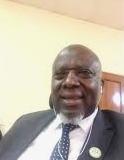Impact of Sexual Harassment on the Overall Well-Being of Female Senior Non-Teaching Workers of Public Tertiary Institutions in Ogun State, Nigeria
DOI:
https://doi.org/10.53449/ije.v4i2.67Keywords:
sexual harassment, overall well-being, female senior non-teaching workers, public tertiary institutionsAbstract
Cases of inappropriate sexual behaviours have been on the increase in Nigerian society and they transcend age limits and gender of the victims. This study examined the impact of sexual harassment on the overall well-being of female senior non-teaching workers of public tertiary institutions in Ogun State, Nigeria. Three research hypotheses were formulated and a descriptive research design was adopted for the study. The population used was 150 female senior non-teaching workers from the selected public tertiary institutions in Ogun State, Nigeria. Purposive and simple random sampling techniques were used to select 50 samples from each of the selected tertiary institutions. The data collected was analysed using descriptive statistic of frequency and percentage while inferential statistics was used to test the hypotheses. The findings of the study revealed that sexual harassment has a significant impact on the overall well-being of female senior non-teaching workers. Based on the findings of this study, it was recommended that the proprietors of these public institutions should make relevant legislation and regulations to guide against this as there seems to be no specific punishment for sexual harassment in the code of conduct of these institutions aside from lumping it up under general misconduct.
Downloads
References
Adenugba, A. A., & Ilupeju, C. O. (2012). Working conditions of female marketers in selected new generation banks in Ibadan. Nigeria Journal of Research in National Development, 10(2), 199 - 207. https://www.ajol.info/index.php/ajpssi/article/view/176122
Agbaje, O. S., Arua, C. K., Umeifekwen, J. E., Umoke, P. C. I., Igbokwe, C. C., Iwuagwu, T. E., Iweama, C. N., Ozoemena, E. L., & Obande-Ogbuinya, E. N. (2021). Workplace gender-based violence and associated factors among university women in Enugu, South-East Nigeria: an institutional-based cross-sectional study. BMC Women’s Health, 21, 124-158. https://doi.org/10.1186/s12905-021-01273-w.
Aina, A. D., & Kulshretha, P. (2017). Sexual harassment in educational institutions in Delhi’ NCR, India: Level of awareness, perception and experience. Sexuality and Culture, 21(1), 106-126. https://doi.org/10.1007/s12119-017-9455-5
Akinfala, F. F., & Komolafe, T. (2017). Sexual harassment as a predictor of organizational outcomes. African Journal for the Psychological Study of Social Issues, 20(1), 60-73. https://www.ajol.info/index.php/ajpssi/cart/view/176122/165522
Alooma, A. G., & Atadiose, S. (2014). Impact of target deposit mobilization on unethical issues and employees’ dissatisfaction in Nigerian banking sector. American International Journal of Contemporary Research, 4(10), 120-132.
Asike, J. C. (2019). Managing multicultural societies: nudging towards a cultural purity in Nigeria. Global Journal of Archeology and Anthropology, 9(3), 72-77 https://doi.org/10.19080/GJAA.2019.09.555764
Avison, W. R., & Jay, T. R. (1988). Stressful life events and depressive symptoms: disaggregating the effects of acute stressors and chronic strains. Journal of Health and Social Behaviour, 29, 253-264.
Bello, S. M. (2016). Gender differences in perception of sexual harassment among Nigerian banks employees. Proceedings of ISER 29th International Conference, UAE, Dubai held on 22nd April 2016 (pp. 21-26). ISBN: 978-93-85973-83-3. 21-26.
Bondestam, F., & Lundqvist, M. (2020). Sexual harassment in higher education – a systematic review. European Journal of Higher Education, https://doi.org/10.1080/21568235.2020.1729833.
Cohn, C. (2013). India and Nigeria: Similar colonial legacies, vastly different trajectories: An examination of the differing fates of two former British colonies. Cornell International Affairs Review, 7(1). Retrieved from https://journals.library.cornell.edu/tmpfiles/CIAR_7_1_2.pdf
Fapohunda, M. T. (2014). Gender differences in perceptions and experiences of sexual harassment in the workplace. Global Journal of Management and Business, 1(2), 036 - 044.
Fedina, L., Holmes, J. L., & Blakes, B. L. (2018). Campus sexual assault: A systematic review of prevalence research from 2000 to 2015. Trauma Violence Abuse, 19(1), 76-93. https://doi.org/10.1177/1524838016631129.
Fitzgerald, L. F., Drasgow, F., Hulin, C. L., Gefland. M. J., & Magley, V. J. (1997). Antecedents and consequences of sexual harassment in organizations: a test of an integrated model. Journal of Applied Psychology, 82, 578-589.
Hill, C., & Kearl, H. (2011). Crossing the line: Sexual harassment at school. Washington, D.C.: American Association of University Women Educational Foundations.
Houle, J. N., Staff, J., Mortimer, J. T., Uggen, C., & Blackstone. A. (2011). The impact of sexual harassment on depressive symptoms during the early occupational career. Social Mental Health, 1(2), 89-105. https://doi.org/10.1177/2156869311416827.
Ige, A.Y., & Adeleke, I. A. (2012). Evaluating the role of culture on sexual harassment: The case of Nigerian organizations. (online) ilera2012.wharton.upenn.edu/RefereedPapers/IgeAY%20AdelekeIA%20ILERA.pdf. Accessed 8 March 2019).
Jayshree, S. (1999). Sexual harassment at work: An HRM perspective. Indian Journal of Industrial Relations, 35(2), 202-216.
Johnson, K. (2010). Sexual harassment in the workplace: a case study of Nigeria. Gender and Behaviour, 8(1). https://doi.org/10.4314/gab.v8i1.54708
Johnson, S. K., Kirk, J. F., & Keplinger, K. (2016). Why we fail to report sexual harassment. Harvard Business Review. Retrieved on Friday 31 December, 2021 from https://hbr.org/2016/10/why-we -fail-to-report-sexual-harassment.
Johnson, P. A., Widnall, S. E., & Benya, F. F. (2018). Sexual harassment of women: Climate, culture and consequences in academic sciences, engineering and medicine. A Consensus Study Report of National Academics of Science, Engineering and Medicine. Washington DC: The National Academies Press. https://doi.org/10.17226/24994.
Kessler, R. C., & McLeod, J. D. (1984). Sex difference in vulnerability to undesirable life events. American Sociological Review, 49, 620-631.
McLaughlin, H., Uggen, C., & Blackstone, A. (2017). The economic and career effect of sexual harassment on working women. Gender and Society, 31(3), 333-358. https://doi.org/10.1177/0891243217704631
Muasya, J. N. (2014). Effects of sexual harassment on women students’ access to opportunities and facilities: A case study of the University of Nairobi, Kenya. Global Journal of Interdisciplinary Social Sciences, 3(4), 83-90
Omonijo, D. O., Uche, O. C. O., Nwadialor, K. L., & Rotimi, O. A. (2013). A study of sexual harassment in three selected private faith-based universities, Ogun State, South-West Nigeria. Open Journal of Social Science Research, 1(9), 250-263. https://doi.org/10.12966/ojssr.12.03.2013.
Page, T. E., & Pina, A. (2015). Moral disengagement as a self-regulatory process in sexual harassment perpetration at work: A preliminary conceptualization. Aggression and Violent Behaviour, 21, 73 - 84. https://doi.org/10.1016/j.avb2015.01.004
Thoits, P. A. (1991). On merging identity theory and stress research. Social Psychology Quarterly, 54, 101-112.
Thoits, P. A. (1995). Stress, coping and social support processes: where are we? what next? Journal of Health and Social Behaviour, 35, 53-79.
USA Department of Education, Office for Civil Rights (2008). Sexual harassment: it’s not academic. Washington DC: USA.
Young, A. M., Grey, M., & Boyd, C. J. (2009). Adolescents’ experiences of sexual assault by peers: Prevalence and nature of victimization occurring within and outside of school. Journal of Youth and Adolescence, 38(8), 1072-83. https://doi.org/10.1007/s10964-008-9363-y








